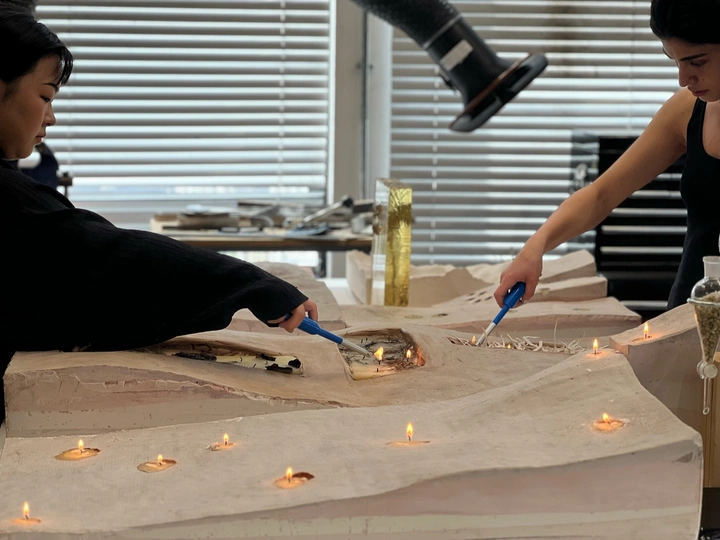Sticky Volumes

Xuan Lin
Tima Rabbat
ARD Studio (ARD.S) is a research-led design collective exploring spatial justice through ecological, legal, and interspecies frameworks. Founded by architects and researchers Tima Rabbat and Lea Kayrouz, in collaboration with designer and systems thinker Lin Xuan, the studio works across several strands—ARD (interspecies design), DAR (architecture), DARS (research), and SARD (product design)—each responding to environmental and social urgencies through collaborative, situated methods.
Tima, Lea, and Xuan share a background in architecture, environmental design, and critical research, with practices that centre on land, memory, systems of care, and more-than-human relations. Their work spans site-based fieldwork, storytelling, speculative design, and collaborative prototyping. Together, they explore how spatial tools—built, visual, legal, or symbolic—can support community resilience and ecological repair.
Notable projects include Sticky Volumes, a collaborative spatial archive developed with a beekeeper in Eviaa, Greece, that documents traditional knowledge as a form of climate adaptation in wildfire-prone regions; and Emergi, a Unicode emoji campaign reimagining digital language for climate disasters, co-developed with the Climate Emergency Software Alliance and piloted in Indonesia and the Philippines.
ARD Studio has collaborated with organizations such as the Gibran Khalil Gibran foundation and the Beirut Art Center. Through public workshops, interdisciplinary teaching, and advocacy, the studio connects architectural practice with environmental justice, civic technology, and collective memory.
ARD Studio challenges dominant narratives of land, risk, and design by foregrounding interdependence, mutual aid, and regenerative methods. Their work is guided by a belief that spatial practice must evolve alongside the crises and communities it aims to support.
Sticky Volumes is a spatial and ecological research project that began as part of the MA Environmental Architecture programme at the Royal College of Art. Rooted in Northern Euboea, Greece—where catastrophic wildfires in August 2021 burned over 51,000 hectares of pine forest—the project explores how legal frameworks like the EU’s Geographical Indications (GIs) might be reimagined to protect fragile ecologies by recognising interspecies cooperation.
Developed in close collaboration with Kostas Haralas, a beekeeper based in Evia, as well as local residents, documentary makers, and activists, the project uses bees as a lens to understand territorial shifts in a fire-prone landscape. Through scent extraction, digital modelling, and legal tools, Sticky Volumes investigates how pollinator-plant relationships can support forest protection. At its core are two Protected Designation of Origin (PDO) applications: one for Pine Honey, harvested from unburnt forests; and one for Fire Honey, produced from the flora emerging after wildfire.
Collaboration was key to the project’s success—grounding it in lived knowledge and care, and moving it beyond speculation into tangible advocacy. Aligning bee foraging zones with legal land recognition, the work challenges narrow definitions of productivity and proposes a new mode of environmental stewardship.
As climate change drives ecosystem instability, Sticky Volumes offers a replicable model for other regions across Europe facing similar pressures. It asks: Can legal protection extend beyond land to interspecies processes of regeneration? Can scent—ephemeral yet spatial—archive ecological change? Continually evolving, the project lives through exhibitions, workshops, and legal action while staying deeply tied to its place of origin.